Kalávrita, Peloponnese, Greece – 1/2014
Returning from Delphi we again crossed the beautiful Carilaos-Trikoupis Bridge over the Gulf of Corinth and headed more or less south into the Peloponnese peninsula. It was then that we noticed a page in one of our guidebooks about the old narrow gauge Kalávrita railway.
Trains are an interesting way of overland travel. You always know where you are but you never get to choose. Nevertheless, trains have held a fascination for us and over the years we have ridden some of the more interesting lines: Lima, Peru to Huancayo (the second highest railway in the world crossing the Andes at 15,681 ft.), the Chihuahua Pacific railway through the Copper Canyon, the Orient Express to Istanbul, the steepest cog rail train in the world up the Pilatus mountain on Lake Lucerne and the Jungfrau railway to the highest train station in Europe (11,332 ft.), both in Switzerland, not to leave out the Heber Valley historic railroad in Utah, the Skunk train in California, and many others.
How could we pass up the old cog railway from Dhiakoftó to Kalávrita built by Italian engineers in 1889 to 1896 to bring minerals from the mountains to the Gulf of Corinth. The 1896 steam locomotive was replaced with a more modern engine in 1962 but the spectacular track itself still passes through tunnels and across narrow bridges zigzagging over the Vouraikós River. Tunnels, seven of them, seem to have been carved with only inches to spare. As the track drops down an 18% grade, you can hear the clack-clack of the cogwheel engaging — you hope. We could only trust the experience of the 35-year veteran engineer, Tassos. He seemed to know what he was doing as we snaked through the beautiful Vouraikós gorge where in places we could see the rushing water of the river directly below the window of the car. Had we spoken Greek, he would have been a wealth of information but even so, we managed to learn quite a bit, in part with the help of another passenger who spoke very broken English. Tassos made us sit up front with him where he pointed out every photo opportunity. At one point he stopped the train and filled his water jug from a small pipe that was stuck straight through a tree to deliver a constant flow of fresh spring water.
Kalávrita has a pretty sad World War II history and it is not the only town in Greece having suffered heavily by the Nazis. On December 13, 1943 the German occupiers carried out one of their most brutal reprisal massacres because of partisan activity in the area, killing the entire male population, 1,436 men and boys, and leaving the town in flames. The left clock tower on the central church stands fixed at 2:34 PM – the hour of the massacre. A mural opposite the train station reads: “Kalávrita, founding member of the Union of Martyred Towns, appeals to all to fight for World Peace.” We were told that the German government officially apologized for this atrocity.
We had found great parking next to the railroad tracks, just across from the old train station and a grocery store. The town pretty much goes to sleep after 8:00 pm, so we did too.
- Climbing down from Delphi the view toward the Gulf of Corinth was beautiful.
- Driving around the Gulf of Corinth we were greeted by this beautiful rainbow.
- Delphi, famous for its oracle, lies on the right hand side in the distance. It had to be a good omen!
- We again crossed the famous Carilaos-Trikoupis Bridge that spans the Gulf of Corinth.
- A modern diesel powered narrow gauge engine replaced the old steam engine in 1962.
- We found safe parking right next to the track near the train station.
- Tassos, the engineer, has been operating this train for 35 years.
- The surrounding cliffs of the Vouraikós gorge reminded us of areas in Utah.
- Narrow bridges crossed the rushing waters of the Vouraikós River many times during the 22 km Journey.
- The seven tunnels seemed to have been carved with only inches to spare.
- Snaking through the narrow Vouraikós gorge we could see parts of the original train line that is now used as a hiking path.
- A quick stop at the tiny Zakhloroú hamlet allowed passengers to debark who wished to hike the trail back to Kalávrita or to visit the famous eight-story Monastery Méga Spiléou on the cliffs above.
- As the track dropped down an 18% grade, we could hear the clack-clack of the cogwheel engaging.
- Peeking over the edge of the window we could see the rushing water of the Vouraikós River.
- Italian engineers carved the railway through the gorge between 1889-1896.
- The original steam engine of 1896 is on display in the Dhiakoftó’s train station.
- Monika always has a way of making friends with train engineers and conductors.



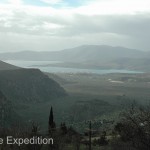
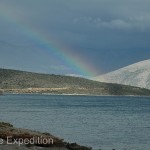
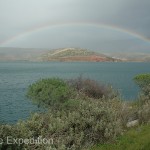
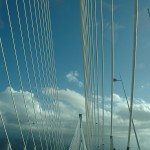
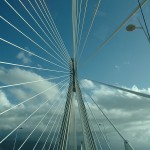
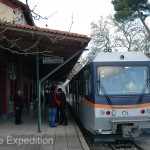
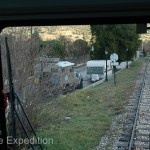
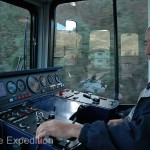
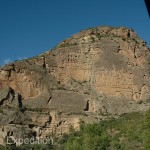
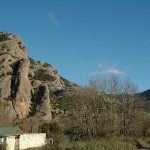
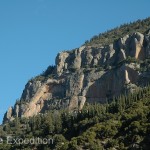
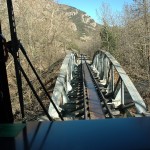
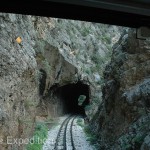
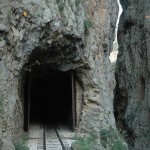
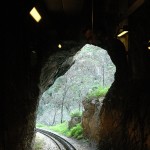
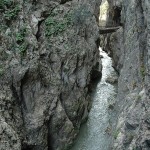
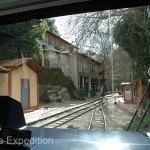
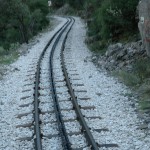
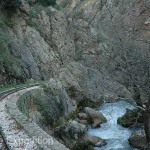
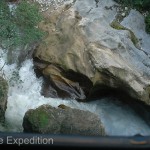
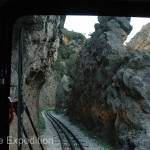
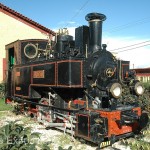









Returning from Delphi we again crossed the beautiful Carilaos-Trikoupis Bridge over the Gulf of Corinth and… http://t.co/X49EvI8NOv